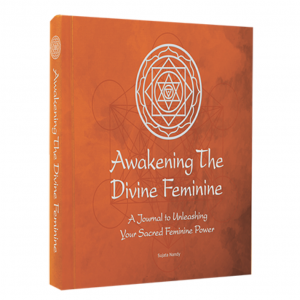Every month of the year, in accordance with the phases of the moon, there are two halves or parts of the moon, the dark half and the bright half. The dark half is when the moon is waning or becoming less bright and the bright half is when it is waxing or becoming full. The bright half ends on the full moon day, while the dark half ends in a dark night, when you see no moon. Thus, there are two special nights in every month: full moon night and the completely dark, no moon night.
A symbol of the mind, the moon has 16 phases, shades or aspects. After two weeks of the month, 15 phases are gone with one phase left, known as Shivaratri. When all 16 phases or aspects are present, the moon shines culminating in the full moon. The full moon starts losing one phase after another as it wanes into the only aspect left of the moon and this is, Maha Shivaratri.
Maha Shivaratri translates to mean, “the great night of Shiva,” a Hindu festival largely celebrated in India as well as in Nepal.
A moon that shines brilliantly can be likened to the mind with all its emotions, with all its desires and worldly involvements. The moon in its fullness stands for all that is worldly and sensual and as we come closer and closer to Shivaratri, the moon starts losing one aspect after another until the last trace of sliver is left – this symbolises the burning, passionate, emotional, sentimental, fully desire-laden mind becoming less active as Shivaratri approaches where the mind slowly becomes withdrawn and annihilated. Therefore, the waning of the moon phases symbolises the annihilation of the qualities of mind.
When the mind is withdrawn in such a manner, you will notice that you ARE God, for that which separates you from God is your mind. When the mind is withdrawn, the realisation becomes apparent and you verily realise that YOU ARE GOD! And in deep sadhana (meditative practise), we realise Shiva – the master of all yogis, the Giver of Boons and the Universal Dancer Who confers balance and harmony within and without our multiverse.
But who is Shiva? Shiva is an aspect of God, who is formless, attribute less, having no beginning nor an end – He is what you call a rule, a philosophy, a dogma or a doctrine having no form.
Shapeless, intangible and ethereal, Shiva is a concept, a notion and an idea – He is a vital force, dynamic and active. Shiva is a sacredness that is totally auspicious, a supreme, important concept spread all over the universe; the Divine principle that is present in all.
We are like this because Shiva is within everyone of us. We are dynamic, intelligent and healthy because of Shiva and once this disappears, it becomes totally dark.
Therefore, our human body with Shiva as the vital force, is active and dynamic. Without it, we become ‘shva,’ a dead body. The recognition, the understanding of Shiva, the life and vitality within us, is the celebration of life, known as Shivaratri.
Hindu culture observes the day in prayers, fasting, yoga, and meditation. Ethics and virtues of self-restraint, honesty, kindness to others, forgiveness, and the discovery of Shiva, (He who is within), are the primary focuses and ultimate goals.
THE SIGNIFICANCE OF MAHA SHIVARATRI
1. Shivaratri is the ritual wedding anniversary of when Lord Shiva was married to Devi Parvati – the cosmic union of the divine masculine with the divine feminine. Nothing in our planet stands on its own, without one or the other present and we need to remember, that within us is this power of the Ida and the Pingala that needs to find its balance, only so that we are able to ascend in consciousness. Our spiritual ascension can only happen when Shiva-Shakti, (within us), are in harmony.
2. Shivaratri is also a day of thanksgiving to Lord Shiva for protecting us from annihilation. On this day, it is believed that Lord Shiva became ‘Neelkantham,’ or the blue-throated one, by swallowing the deadly poison that arose during the churning of “Kshir Sagar,” or the milky ocean. The poison was so deadly that even a drop of the poison in His stomach, which represented the Universe, would have annihilated the entire world. Instead Lord Shiva held it in His neck, which turned blue because of the poison.
According to the Shiva Purana, the Mahashivaratri puja involves six steps which are:
1. Taking a bath in the Ganga to purify the soul, mind and body;
2. Bathing of the Shiv Ling with the holy water of Ganga, then bathing with milk and honey;
3. Applying vermilion paste on Shiv Ling representing our virtuousness;
4. Offering of fruits and flowers for obtaining long life and satisfaction of desires;
5. Lighting of ‘diya,’ or ghee lamps which represents achieving more knowledge and wisdom; and
6. Offering of betel leaves representing our true satisfaction for all that is to come in our lives.
Worshipers also apply three horizontal lines of holy ash on their foreheads – just like Lord Shiva representing spiritual knowledge, cleanliness and penance. Wearing of garlands made of the Rudraksha, as it is believed that the Rudraksha tree originated from the tears of Lord Shiva.
HAR HAR MAHADEV!!
SUJATA NANDY WORLD GURUKUL
www.sujatanandy.com







